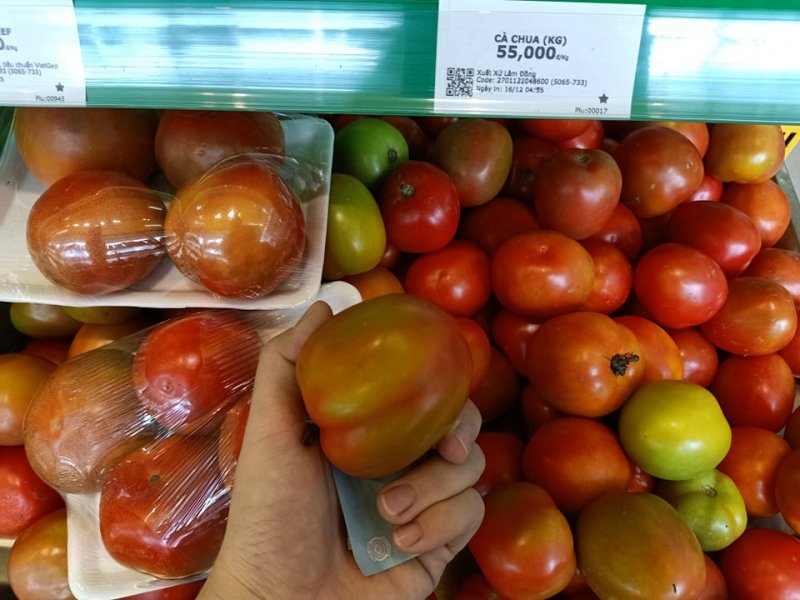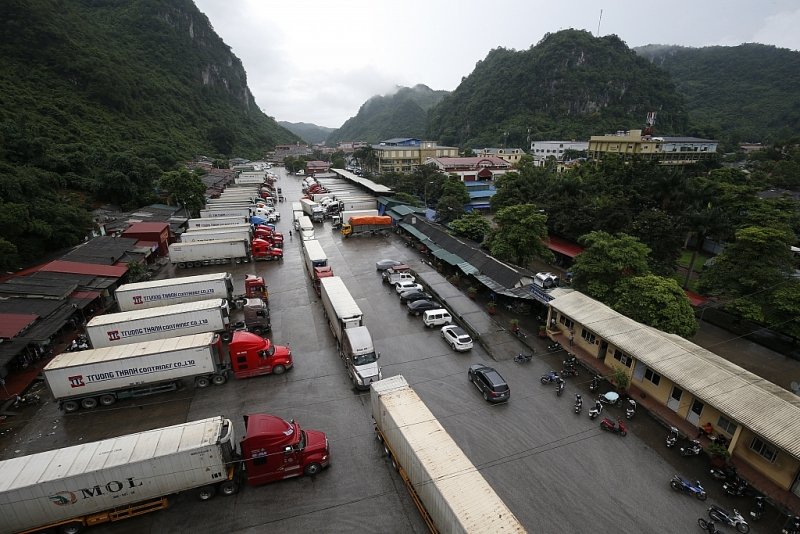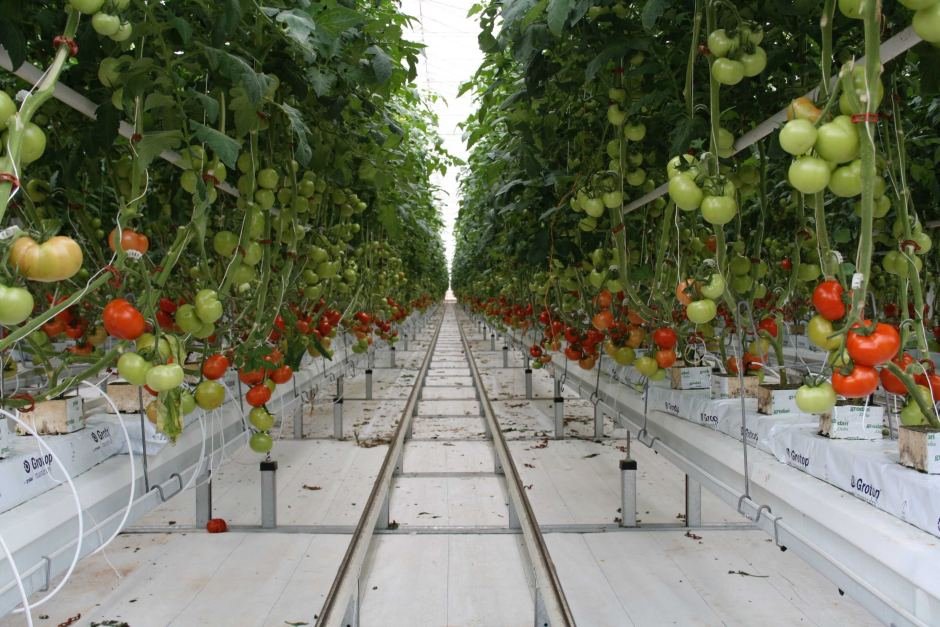HIGHLIGHTS
- In the past 2 weeks, the price of this food has suddenly increased 2-3 times higher than before.
- The price of vegetables in the country has increased since September until now because of prolonged heavy rains that flooded the plants.
- In addition, many growing areas in the West and the capital Da Lat changed crops, reducing the area planted to tomatoes, so the amount of goods sold to the market decreased sharply.
- The high price of tomatoes is a common trend around the world such as in China, Europe, South Africa, USA and many other regions.
FULL ARTICLE
“Burning hands” with towering tomato prices
We have commonly used tomato food to add flavor to dishes with an average price of 15,000 – 20,000 VND/kg. However, in the past 2 weeks, the price of this food has suddenly increased 2-3 times higher than before.
Specifically, at the supermarket Go! (Binh Tan district), tomatoes are priced at 52,900 VND/kg and VietGap Dalat tomatoes are priced at 49,800 VND/kg. Meanwhile, at local markets such as Ba Chieu market (Binh Thanh district), tomatoes are priced at 55,000 VND/kg, small ones (bad, slightly battered) are priced at 45,000 VND/kg.

The price of tomatoes not only increased abnormally in the South but also in the North, consumers were surprised at this sky-high price. At Thanh Cong market (Dong Da), a trader shared, “I have never seen tomatoes as expensive as today, up to 60,000 VND/kg. If I take 15 to 20 kg to sell on weekdays, now I only dare to import a few kilos to sell with other vegetables, if it’s expensive, no one will buy it, but if it’s sold cheap, there’s no profit.”
The reason for the high price of tomatoes
Explaining the reason for the scarcity of tomatoes and the sudden increase in prices, first, the price of vegetables in the country has increased since September until now because of prolonged heavy rains that flooded the plants. Many tomato growing areas are constantly exposed to rain and frost, so the leaves turn yellow, wilt and die.
In addition, because of the prolonged Covid-19 epidemic, farmers were worried that they might fall into the situation where harvested agricultural products could not be sold as happened, so the planting area was narrowed. In addition, many growing areas in the West and the capital Da Lat changed crops, reducing the area planted to tomatoes, so the amount of goods sold to the market decreased sharply.
The slower than usual clearance of goods from China also affected another thing, the supply of imported tomatoes. Currently, the tomato growing area is only in a few regions, such as Moc Chau and Da Lat, so the difficulty in customs clearance will cause the output to decrease. The price of tomatoes in China itself also increased for a long time due to weather factors and increased production costs.

The high price of tomatoes is a common trend around the world
In China, bad weather and rising production costs caused tomato prices to remain high for a long time. Some time ago, the places that are the major source of this food in China suffered from continuous heavy rains for many days, making the fruit set rate in tomato plants lower than normal, significantly reducing the supply of tomatoes for the country. market compared to previous years.
Besides, from the beginning of the year until now, prices of seeds, fertilizers, pesticides, etc. all increased, pulling production costs up; rising oil prices also increased transportation costs, contributing to a sharp increase in vegetable prices and tomatoes in particular. Currently, the selling price of tomatoes in China is still high, about 6 yuan/500 grams.
Meanwhile, in Europe, energy crises, adverse weather and viruses put pressure on tomato growers. Normally, in November, the price of tomatoes usually decreases slightly because of the outrageous amount of imported tomatoes, but this year everything is contrary to the inherent rules. Tomato prices in the Netherlands and Belgium both increased in a row in November.
In the tomato greenhouses of the Netherlands and Belgium, natural light is not enough to serve the crops. They have had to use electric lights since the end of November to provide enough light. Therefore, high energy prices are the most important factor that keeps tomato prices from cooling down.

Besides the difficulty of high energy prices, tomato viruses are also keeping prices high. The ToBRFV virus has attacked tomatoes in both the Netherlands and Belgium, forcing many farmers to clear their tomato fields and switch to cucumbers or sweet peppers. More specifically in Italy, the virus has caused the average price of tomatoes here to reach 1.5 euros/kg but not enough to cover the costs for producers.
In South Africa, the high price of tomatoes is also due to weather factors, namely too much rain. Meanwhile, the price of tomatoes in the US recently decreased slightly, but is still much higher than the same period in previous years.
Thanh Thao
Disruption of Southeast Asian agricultural product supply chains













